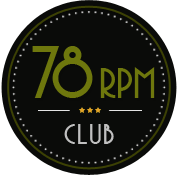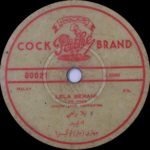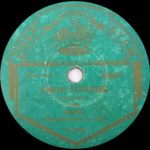Pathé
1894 - 1930s
Pathé Records was a France-based international record label and producer of phonographs, active from the 1890s through the 1930s.
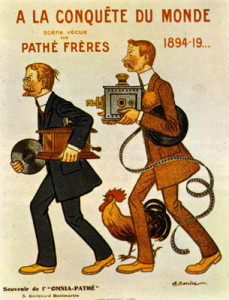 The Pathé record business was founded by brothers Charles and Émile Pathé, then owners of a successful bistro in Paris. In the mid-1890s they began selling Edison and Columbia phonographs and accompanying cylinder records. Shortly thereafter, the brothers designed and sold their own phonographs. These incorporated elements of other brands.Soon after, they also started marketing pre-recorded cylinder records.
The Pathé record business was founded by brothers Charles and Émile Pathé, then owners of a successful bistro in Paris. In the mid-1890s they began selling Edison and Columbia phonographs and accompanying cylinder records. Shortly thereafter, the brothers designed and sold their own phonographs. These incorporated elements of other brands.Soon after, they also started marketing pre-recorded cylinder records.
By 1896 the Pathé brothers had offices and recording studios not only in Paris, but also in London, Milan, and Moscow.
The earliest Pathé offerings were phonograph cylinders. Pathé manufactured cylinder records until approximately 1914.
In 1905 the Pathé brothers entered the growing field of disc records. At first they sold single-sided discs with a recording in wax on top of a cement base.
In October 1906 they started producing discs in the more usual manner with shellac. Even with this less eccentric material, the early Pathé discs were unlike any others. The grooves were cut vertically into the discs, rather than across them. They were also wider than other companies' records, requiring a special ball-shaped .005-inch-radius (0.13 mm) stylus to play them. The discs rotated at 90 rpm, rather than 78 or 80. They originally started on the inside, near the center of the disc, spiraling out to the edge rather than the normal rim-start discs which were first produced in 1915.
Pathé discs were commonly produced in 10 inch, 10 1⁄2 inch, and 11 1⁄2 inch sizes. 14 inch discs were also made, as were very large 20 inch discs.
Pathé was the first company to make master recordings in a different medium than the final commercial product.
The vertically-cut Pathé discs normally required a special Pathé phonograph equipped with a sapphire ball stylus. The advantage of the sapphire ball stylus was its permanence. There was no need to change a needle after every record side. Since most records and phonographs used a different playback method, various attachments were marketed that allowed one to equip a Pathé phonograph to play standard, laterally-cut records. Attachments were also sold to equip a standard phonograph to play Pathé records.
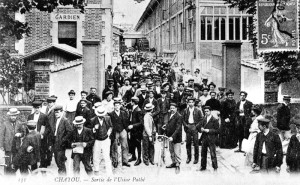 In 1920 Pathé introduced a line of "needle-cut" records, at first only for the USA market. The needle-cut records were laterally-cut discs designed to be compatible with standard phonographs, and they were labelled Pathé Actuelle. In the following year, these "needle-cut" records were introduced in the United Kingdom and within a few more years they were selling more than the vertical Pathés, even on the continent. Attempts to market the Pathé vertical-cut discs abroad were abandoned in 1925, though they continued to sell in France until 1932.
In 1920 Pathé introduced a line of "needle-cut" records, at first only for the USA market. The needle-cut records were laterally-cut discs designed to be compatible with standard phonographs, and they were labelled Pathé Actuelle. In the following year, these "needle-cut" records were introduced in the United Kingdom and within a few more years they were selling more than the vertical Pathés, even on the continent. Attempts to market the Pathé vertical-cut discs abroad were abandoned in 1925, though they continued to sell in France until 1932.
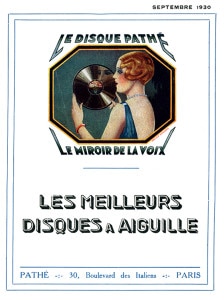 In mid-1922 Pathé introduced a lower priced label called Perfect. This label became one of the most popular and successful "dime store" labels of the 1920s, and survived beyond the end of the US Pathé label - discontinued in 1930 - right up to 1938.
In mid-1922 Pathé introduced a lower priced label called Perfect. This label became one of the most popular and successful "dime store" labels of the 1920s, and survived beyond the end of the US Pathé label - discontinued in 1930 - right up to 1938.
In January 1927, Pathé began recording using the new electronic microphone technology, as opposed to the strictly acoustical-mechanical method of recording they used until then.
In December 1928, the French and British Pathé phonograph assets were sold to the British Columbia Graphophone Company. In July 1929, the assets of the American Pathé record company were merged into the newly formed American Record Corporation. The Pathé and Pathé-Marconi labels still survive, first as imprints of EMI and now currently EMI's successor Universal Music Group. The film division of Pathé Frères still survives in France and Switzerland.
